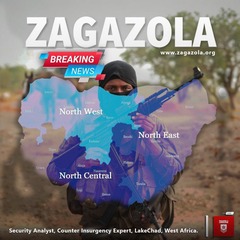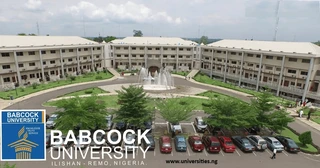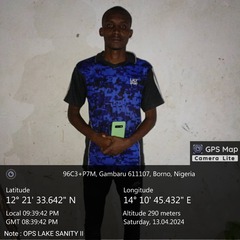Shock, Anger as Video Showing Savage Killing of Policeman by Maiduguri Criminal MARLIAN GANGS
By: Zagazola Makama
Palpable air of anger and indignation pervade the air as harrowing video showing notorious Maiduguri criminal gang, Marlians, savagely clubbing, stabbing and eventually killing a Police Constable, Babagana Mala, attached to the CRACK squad in Maiduguri, surfaced.
The daring criminal group is known and feared for their brazen attacks on innocent citizens in Maiduguri metropolis and the environ. They specialize in snatching of mobile phones and other personal belongings from unsuspecting folks who are viciously attacked, killed or severely injured if resisted. The impunity, brazen nature and the in-your-face criminality of the gangsters often confounds residents and victims.
Zagazola Makama, a Counter-Insurgency Expert and Security Analyst in the Lake Chad region gathered that the latest incident occurred on July 23, near the 33 Artillery Military Brigade in Maiduguri.
A video obtained by Zagazola depicted Babagana being brutally assaulted by more than ten youths who repeatedly punched, stomped, clubbed, dragged and kicked him in the face while he struggled helplessly.
"Some of the youths were chanting, “kill him, don't leave him, you think you can come here and try us, don't leave him, don't leave him, take his gun”. The youths kept chanting as they continued beating him to the ground.
In the process, one of the youths brought out a poisonous knife and stabbed him in the back and took his gun. Another youth was heard saying “Ka Manna mai” (shoot him). At that point, he struggled to run away but fell down due to the injuries. Again, the youths came back, slapping and kicking him in the face.
Three persons later appeared on the scene to disperse the youths after seizing the gun from them. The victim was later rushed to the hospital but passed away shortly due to loss of blood.
Zagazola understands that the Borno State Police Command has arrests five suspects including a lady who appeared in the video associated with the murder while the main suspected culprits were currently on the run.
Background
The emergence of the Malians and other gangster groups in Maiduguri and Jere LGAs of Borno State, poses significant security threats to the state. The groups made up of young men predominantly of ages between 14 and 25, have become increasingly active in recent months engaging in various criminal activities and destabilizing the already fragile security situation in the state.
The security threats posed by these gangster groups are multifaceted. The gangs primarily engage in armed robbery, theft, drug trafficking, and other illicit activities. They target vulnerable communities and individuals, extort money, and recruit young individuals into their ranks. Their criminal activities not only cause significant financial losses but also create an atmosphere of fear and insecurity among residents.
The gangster groups also engage in intra-gang violence, often clashing with rival criminal groups for territorial control and supremacy. These clashes result in casualties including deaths.
Disturbed by the spate of urban gangsterism perpetrated by the criminal gangs, residents of Maiduguri have been demanding aggressive action from the security agencies against the group but anytime they are arrested, the police release them in controversial circumstances without charging them to the court.
Way forward
These young boys, sometimes seeking economic opportunities, often found themselves marginalized and excluded from mainstream society. Lacking education and job prospects, some of these individuals turned to criminal activities as a means of survival and empowerment. Over time, the group expanded its operations and established a strong presence within the Borno State capital specifically Gwange, Zannari, Old Maiduguri, Bayan Quarters, Bulabulin, and other areas within Maiduguri.
Putting a stop to the emergence and activities of these gang groups in Maiduguri and environs requires a comprehensive and multi-faceted approach that addresses the underlying causes of their formation. Here are some of my take; that can be implemented:
1. Enhance security and law enforcement: Strengthen security measures and increase the presence of law enforcement agencies in gang-infested areas. This includes improving intelligence gathering, surveillance, and patrols to identify and dismantle gang operations.
2. Community engagement and empowerment: Engage local communities by establishing dialogue and building trust. Encourage residents to report suspicious activities and provide information on gang members. Empower communities by providing education, skill training, and economic opportunities to help individuals escape the cycle of poverty and prevent them from joining gangs.
3. Target youth at risk: Implement youth development programs that focus on education, vocational training, and recreational activities. Engage young people through mentorship programs, sports clubs, and cultural activities as positive alternatives to gang involvement.
4. Strengthen social services: Provide access to essential social services such as healthcare, clean water, and sanitation. Improve infrastructure and create job opportunities to enhance socio-economic development in marginalized areas, reducing the appeal of criminal activities.
5. Rehabilitation and reintegration: Develop comprehensive rehabilitation and reintegration programs for gang members who want to leave their criminal activities. Support them in acquiring education, vocational skills, and psychological assistance to facilitate their reintegration into society.
6. Mobilize religious and community leaders; Engage our religious and community leaders as influential figures who can advocate against gang activities and promote peaceful coexistence. Utilize their positions to reinforce positive values, discourage criminal behavior, and create awareness about the consequences of gang involvement.
7. Public awareness and education: Conduct public awareness campaigns to educate the population about the dangers and consequences of gang involvement. Raise awareness about the government's commitment to tackling gangs and the available support services for individuals who want to leave their criminal activities.
8. Long-term socio-economic development: Prioritize long-term socio-economic development initiatives that address unemployment, poverty, and social inequalities. This will help create a sustainable environment where individuals have access to opportunities, reducing the appeal of turning to gangs for a source of income or empowerment.
Combining these strategies and continuously evaluating their effectiveness is crucial for putting a stop to the emergence and growth of gang groups in Maiduguri. It requires a sustained and collaborative effort involving the government, law enforcement agencies, community leaders, and civil society to create a safer and more prosperous environment for all residents.










